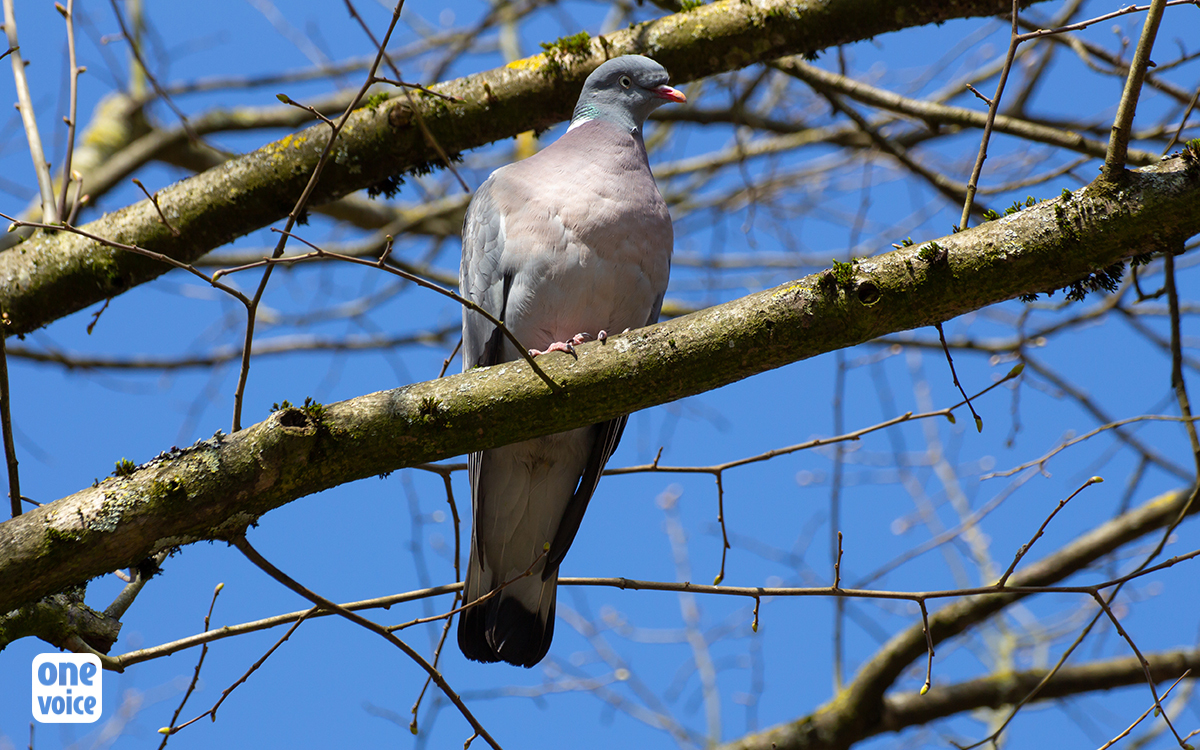

Wood pigeons in the Pyrenees: migratory birds still in the firing line
The Prefecture has removed the page with the prefectural decree from their website…
We have downloaded it. You can find it here.
Wood pigeons are targeted by hunters. Once again, hunters want to be able to kill animals outside of the official hunting season. To do this, their aim, with the agreement of the Aude Prefecture, is to get them recognised as a species likely to cause damage (previously referred to as pests). The arguments are still misleading; hunters want to shoot them down on their return to the coast from Spain, where these migratory birds by definition do not cause any damage to crops.
In Aude, a prefectural decree plans to classify wood pigeons (Columba palumbus) as a species likely to cause damage from 1 July 2021 to 30 June 2022. If this decree becomes enforced, these birds will still be, slightly more so, victims of hunters and the like. In fact, they can be killed:
- Without formal closure of the hunting season for this species, so from 20 February 2022 in Aude, until 31 March 2022;
- Under individual prefectoral authorisation from 1 April to 30 June 2022.
Since a reminder is necessary, let’s clarify: wood pigeons are migratory birds. The European Parliament and Council Directive 2009/147/CE of 30 November 2009 concerning the conservation of wild birds, named ‘Birds’, strictly forbids all hunting during their mating season and their prenuptial migration.
Prenuptial migration (their return journey from the South towards nesting grounds further North) for wood pigeons begins in… mid-February. This is therefore the reason that a ministerial decree (on 19 January 2009) imposes a closure from 20 February in all departments (after local exceptions between 11 and 20 February).
The Directive (a provision included in French law in order to allow the classification of ‘pests’) permits exceptions if:
- The wood pigeons are scattered in a symptomatic way across the department;
- Their presence is harmful to a protected interest:
- Public health and safety;
- Protection of flora and fauna;
- To prevent significant damage to agricultural, forestry, or aquafarming activities;
No alternative solution to the ‘destruction’ is satisfactory
But where are these exemptions in the decree proposal ?
The consultation on the decree proposal does not specify how these conditions are fulfilled.
In fact, hunting wood pigeons in the month of March is a tradition. The hunters from the Aude region place themselves mainly on the coast in order to await the passage of these birds from elevated firing positions. This zone, mostly made up of forests, heaths, and vineyards, isn’t likely to be affected by wood pigeons. Only the protein (peas, chickpeas), oleaginous (sunflower and rapeseed), and cereal (corn, wheat) crops are sensitive and are only present in the North-West of the department.
According to the whistle-blower in the region who asked us for help, the authorities estimate that there would be more than 1000 occupied firing posts (some days from dawn until dusk) during the Spring migration: 20-30,000 birds are ‘taken’ each season, including around 5000 in the town of Leucate alone.
We are faced with what should be labelled as a misappropriation, a setback of this sordid and pathetic regulation of so-called ‘pests’, with the one and only goal of maintaining this traditional practice of wood pigeon hunting in the month of March in Aude. But what wouldn’t we do, in the prefectures, to please those who claim to be protecting nature with their gunfire ?!
Translated from the French by Joely Justice
The Prefecture has removed the page with the prefectural decree from their website…
We have downloaded it. You can find it here.
The hearing is set by the interim relief judge for 7 March 2022 at 2:30pm at the Montpellier administrative tribunal.
We have retracted the appeal to participate in the public consultation which today no longer has any purpose.